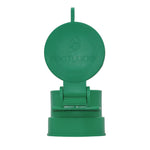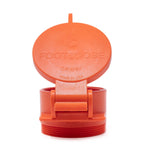You have no items in your shopping cart.
More than 43 million Americans use private wells as their primary source of drinking water.
Although there are about 15 million domestic wells in the United States, many people are unfamiliar with the various types of well systems and how they work. Private wells are a common feature of rural and country homes, and anyone who wants to purchase, build, or renovate such a property will need to learn about these structures.
Why Do Some Homes Have Private Wells?
Wells are among the oldest technologies known to humankind. Wherever there is an aquifer – an underground water supply layered with permeable rock – there is potential to dig a well and deliver fresh water to the surface.
Properties in large cities typically draw water from a municipal water supply. This makes sense in high-density urban environments, but it’s less appealing in rural areas.
Ultimately, local economic factors determine whether a home is likely to have its own well. If connecting every home in the region to a central water supply costs more than digging a well on each property, local governments need a compelling reason to go through the trouble.
The Difference Between Well Water and Tap Water
Owning a home with its own well comes with advantages and drawbacks. Since well water comes straight from the ground, it contains none of the chemical treatments that municipal tap water is subject to. This might sound good at first, but it also means that well water is susceptible to contamination from bacteria and other microorganisms.
As a result, well owners have to test their well water at least once a year. Certified laboratory tests typically cost less than $50. In some areas, county health departments and state agencies can perform the test for you. You can also find cheap, reliable self-testing kits on sale at most rural home supply stores.
Groundwater quality can change drastically depending on environmental conditions. Major industrial projects can leak heavy metals into local aquifers, resulting in toxic well water. Well owners are well-advised to scrutinize the environmental permits held by local mining operations, petroleum refineries, and electronics manufacturers. Heavy metal toxicity can cause internal organ failure, anemia, and cancer.
Other mineral deposits may have less alarming effects. Since well water is untreated, it can contain a high concentration of calcium and magnesium. This is why experts call it “hard water.” Hard water is especially common in the Midwest and Southwestern United States.
Hard water is generally safe for human consumption, but it can damage plumbing and reduce the effectiveness of soaps and detergents. This can make it difficult to wash clothing properly and leave glassware with a cloudy sheen. Most well water users install a softening system to treat their well water and remove these minerals.
3 Different Types of Water Wells Compared
Despite millennia of history, well-digging technology did not advance significantly until the 19th century. The Ruffner Brothers invented a mechanical drilling method for making wells in 1808. Shortly after, new boring machines allowed landowners to dig wells of unprecedented depth. Learn how to test your exsistaning Water Well presure.
1. Dug Wells
Digging is the oldest method for creating a well. The process is easy to understand – simply grab a shovel and keep digging until you hit the aquifer. Traditionally, dug wells are lined with stone or some other heavy material to prevent the well from collapsing.
Hand-dug wells require a great deal of difficult manual labor. They can collapse during excavation, posing extreme danger to diggers. Once built, the wells are highly susceptible to contamination. As a result, hand-dug wells are not recommended.
2. Driven Wells
Driven wells are relatively simple well-building devices. They work by driving a small-diameter pipe into the ground and driving it through water-bearing sand or gravel. As a result, these wells only work in areas where groundwater is relatively close to the surface. Machine-driven wells rarely extend deeper than 50 feet below ground level.
Driven wells are difficult to seal with grouting material. This makes them susceptible to contamination from nearby sources. As a result, keeping a driven well contamination-free can be difficult.
3. Drilled Wells
Rotary-drilling machines can create wells up to 1,000 feet deep. These wells, also called bored wells, require sealed casing to retain structural integrity and feature additional systems to prevent sediment inflow. Since the well’s interior is encased as it is drilled, these wells are resistant to collapse. Modern drilling machines seal the casing with grouting material as the drill operates, ensuring a tight, contamination-free seal.
Drilling a well requires heavy, truck-mounted equipment. This makes the drilled well one of the most secure and reliable wells on the market – but also one of the most expensive to build.
Which Well Is Right for Your Home?
Drilled wells have the most durable, contamination-resistant construction, which makes them a prime candidate for anyone who wants to install a private water well on their property. They can have a wide diameter, making them ideal for drawing large volumes of water up from the aquifer.
Both drilled wells and dug wells can draw water from less permeable aquifers, such as those that contain high concentrations of silt, clay, or fine sand. Driven wells are suitable for small-scale water consumption but are limited by the small diameter, shallow depth, and lack of inner wall casing.
As a result, homeowners should place a premium on high-quality drilled wells. Of the different types of wells available on private homes, these are the ones most likely to retain functionality and add value to the property. High-quality dug wells are also a viable choice, but only if the well is already present on the property – hand-digging new wells is not recommended.
In all cases, owning a well helps homeowners reduce water consumption costs and promote healthy, sustainable living. But keeping your well safe and functional requires regular upkeep. Private well owners must remain vigilant against the threat of water contamination, both from waterborne microorganisms and local pollution seepage.









